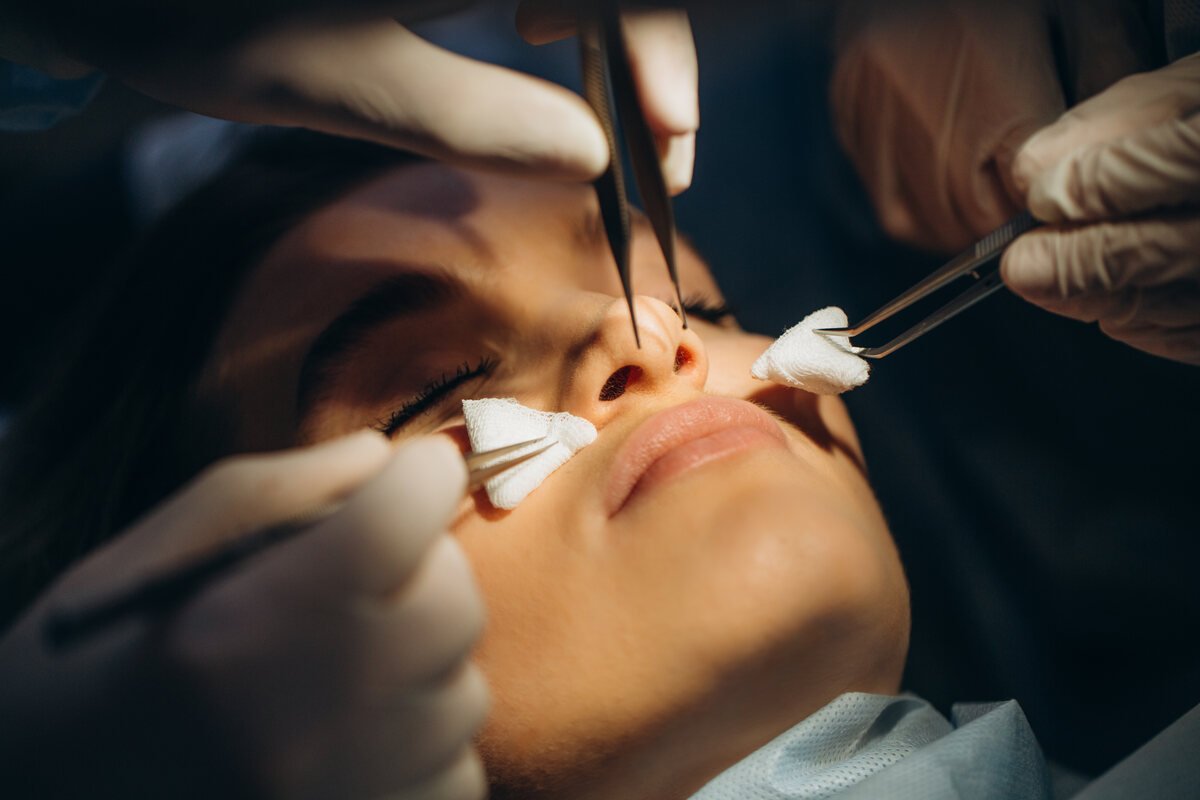The desire for aesthetic enhancement has never been more accessible, yet the financial barrier often stands between individuals and their transformation goals. Cosmetic surgery financing options have evolved significantly, offering multiple pathways to fund procedures that were once considered luxury expenses reserved for the wealthy.
Whether you’re considering a subtle enhancement or a complete makeover, understanding the landscape of cosmetic surgery financing options can make the difference between postponing your dreams indefinitely and taking actionable steps toward your goals. From traditional medical loans to innovative payment platforms, today’s financing solutions cater to diverse financial situations and credit profiles.
The Cosmetic Surgery Financing Options has recognised that cost shouldn’t be the primary obstacle to self-improvement. As a result, both medical practices and financial institutions have developed comprehensive financing programs that break down substantial procedure costs into manageable monthly payments, making aesthetic procedures more accessible than ever before.
Understanding the Financial Landscape of Cosmetic Surgery
The cost of cosmetic procedures varies dramatically based on complexity, geographic location, and surgeon expertise. A simple Botox treatment might cost a few hundred dollars, while comprehensive facial reconstruction or body contouring procedures can reach tens of thousands of dollars.
Most cosmetic procedures fall outside traditional health insurance coverage since they’re considered elective rather than medically necessary. This reality has created a robust market for alternative financing solutions specifically designed for aesthetic medicine.

The average American considers cosmetic surgery an investment in their personal and professional confidence. Studies indicate that individuals who undergo cosmetic procedures often report improved self-esteem, career advancement opportunities, and enhanced quality of life, making the financial investment worthwhile for many patients.
Traditional Cosmetic Surgery Financing Options
Medical Credit Cards and Healthcare Financing
Medical credit cards represent one of the most popular cosmetic surgery financing options available today. Companies like CareCredit and Alphaeon Credit specialise in healthcare financing, offering promotional periods with zero per cent interest for qualified applicants. These cards typically provide credit limits ranging from $1,000 to $25,000, accommodating everything from minor treatments to major surgical procedures.
Cosmetic Surgery Financing Options: The application process is streamlined, with many providers offering instant approval decisions directly in medical offices. The key advantage of medical credit cards lies in their promotional financing periods. Many offer 12, 18, or 24-month interest-free periods, allowing patients to pay off procedures without accruing interest charges if payments are made consistently and the balance is cleared before the promotional period expires.
Personal Loans for Cosmetic Surgery
Traditional personal loans through banks, credit unions, and online lenders provide another avenue for financing cosmetic procedures. These unsecured loans typically offer fixed interest rates and predictable monthly payments over terms ranging from two to seven years. Personal loans for cosmetic surgery often feature competitive interest rates for borrowers with good credit scores.
Cosmetic Surgery Financing Options: Unlike medical credit cards, personal loans provide the full amount upfront, allowing patients to negotiate cash payment discounts with their surgeons. Credit unions frequently offer the most favourable terms for personal loans, with lower interest rates and more flexible qualification criteria than traditional banks. Online lenders have also emerged as competitive options, often providing faster approval processes and funding timelines.
Cosmetic Surgery Financing Options Through Medical Practices
In-House Payment Plans
Many cosmetic surgery practices offer internal financing programs, creating customised payment arrangements directly with patients. These in-house cosmetic surgery financing options often provide more flexibility than traditional lending products. Surgeons may offer payment plans spanning several months or years, sometimes without interest charges or credit checks.
This approach benefits both patients and practices by eliminating third-party lending fees and creating more accessible treatment options. Cosmetic Surgery Financing Options. In-house financing arrangements vary significantly between practices. Some surgeons require substantial down payments, while others may accept smaller initial payments with extended repayment terms. Negotiating these arrangements often depends on the patient-surgeon relationship and the practice’s financial policies.
Practice Partnerships with Lending Companies
Many cosmetic surgery practices partner with specialised medical financing companies to offer comprehensive lending solutions. These partnerships combine the convenience of in-office applications with the backing of established financial institutions. Companies like Prosper Healthcare Lending, PatientFi, and United Medical Credit work directly with medical practices to provide on-site financing options.
Patients can complete applications during consultations and receive immediate approval decisions. These partnerships often result in competitive rates and terms specifically negotiated for the practice’s patients. Surgeons may secure volume discounts or promotional rates that benefit their clientele, creating win-win arrangements for all parties involved.
Alternative Cosmetic Surgery Financing Options
Home Equity and Personal Assets
Homeowners may leverage their property’s equity to finance cosmetic procedures through home equity loans or lines of credit. These secured loans typically offer lower interest rates than unsecured alternatives, making them attractive cosmetic surgery financing options for eligible borrowers. Home equity lines of credit (HELOCs) provide flexible access to funds as needed, allowing patients to draw money for procedures as they schedule them.
This approach works well for individuals planning multiple procedures over time or those uncertain about final treatment costs. However, using home equity for cosmetic surgery involves significant risk. The property serves as collateral, meaning failure to repay could result in foreclosure. Borrowers should carefully consider whether cosmetic procedures justify risking their primary residence.
Peer-to-Peer Lending Platforms
Peer-to-peer lending platforms like LendingClub and Prosper connect borrowers directly with individual investors, bypassing traditional financial institutions. These platforms often provide competitive rates for qualified borrowers seeking cosmetic surgery financing options. The application process involves creating detailed loan profiles explaining the intended use of funds.

Investors review these profiles and choose to fund loans that meet their criteria, creating a marketplace approach to lending. Peer-to-peer loans typically offer fixed rates and terms, providing predictable payment schedules. The platforms handle all administrative aspects, from payment processing to investor relations, simplifying the borrowing experience.
Also Read: Apple’s AI Doctor could transform your health
Specialised Cosmetic Surgery Loans
Several lenders specialise exclusively in cosmetic surgery financing, understanding the unique needs and concerns of aesthetic medicine patients. These specialised lenders often provide more flexible qualification criteria and procedure-specific loan products. Companies like Cosmetic Surgery Financing and Enhance Patient Financing focus solely on aesthetic procedures, developing expertise in evaluating loan applications from cosmetic surgery patients.
This specialisation often translates to more favourable terms and faster approval processes. Specialised lenders may offer unique features like procedure-specific loan amounts, surgeon networks with pre-negotiated rates, or payment deferrals for recovery periods. These tailored approaches address the specific challenges of cosmetic surgery financing.
Comparing Interest Rates and Terms
Understanding APR and Total Cost
When evaluating cosmetic surgery financing options, understanding the annual percentage rate (APR) provides the most accurate comparison between lending products. APR includes interest rates plus additional fees, presenting the true cost of borrowing. Total cost calculations should extend beyond monthly payments to encompass the entire loan term. A lower monthly payment with an extended term may result in higher total interest payments, making shorter-term options more economical despite higher monthly obligations.
Credit Score Impact on Financing Terms
Credit scores significantly influence available cosmetic surgery financing options and their associated terms. Borrowers with excellent credit (720+ scores) typically qualify for the most favourable rates and terms across all lending products. Good credit scores (680-719) still provide access to competitive financing options, though rates may be slightly higher than those offered to excellent credit borrowers. Fair credit scores (580-679) limit option, but don’t eliminate financing possibilities.
Poor credit scores (below 580) present challenges in securing traditional financing, though specialised lenders and secured loan options may still provide access to cosmetic surgery financing options. These borrowers may need to consider alternative approaches or credit improvement strategies. Credit utilisation, payment history, and length of credit history all influence financing terms. Borrowers should review credit reports before applying for financing to identify and address any potential issues that might impact approval or terms.
Planning Your Cosmetic Surgery Investment
Budgeting for Total Procedure Costs
Successful cosmetic surgery financing requires comprehensive budgeting that extends beyond the procedure itself. Total costs include surgeon fees, facility charges, anaesthesia costs, medications, compression garments, and potential revision procedures. Recovery time may involve lost income for patients who require extended time away from work. This financial impact should be factored into overall procedure budgeting to ensure adequate resources throughout the entire process.
Post-procedure care and follow-up appointments may involve additional costs not included in initial procedure quotes. Patients should discuss all potential expenses with their surgeons to develop accurate budget projections. Emergency funds should remain available for unexpected complications or extended recovery periods. While complications are rare with qualified surgeons, financial preparedness ensures that unexpected medical needs don’t create additional stress during recovery.
Timing Your Financing Application
The timing of financing applications can impact approval odds and available terms. Applying for cosmetic surgery financing options when credit scores are optimised and debt-to-income ratios are favourable increases the likelihood of securing better terms. Multiple credit inquiries within short timeframes can negatively impact credit scores. Borrowers should research lenders thoroughly and limit applications to the most promising options to minimise credit inquiry impacts.
Seasonal factors may influence financing availability and terms. Some lenders offer promotional rates during specific periods, while others may tighten lending criteria during economic uncertainty. Monitoring market conditions can help borrowers time applications strategically. Pre-approval processes allow borrowers to understand available terms before committing to specific surgeons or procedures. This approach provides negotiating power and ensures that financing is secured before scheduling surgery dates.
Qualifying for Cosmetic Surgery Financing
Documentation and Application Requirements
Most cosmetic surgery financing options require standard financial documentation including proof of income, employment verification, and identification. Self-employed applicants may need additional documentation like tax returns or profit and loss statements. Application processes vary between lenders, with some offering instant online approvals while others require more comprehensive underwriting. Understanding each lender’s requirements helps streamline the application process.
Debt-to-income ratios significantly influence approval decisions and available terms. Lenders typically prefer ratios below 40%, though some specialized medical lenders may accept higher ratios for qualified applicants. Co-signers can improve approval odds and secure better terms for borrowers with limited credit history or lower income levels. However, co-signers accept full responsibility for loan repayment if the primary borrower defaults.
Improving Your Financing Approval Odds
Credit score improvement strategies can enhance available cosmetic surgery financing options. Paying down existing debt, correcting credit report errors, and maintaining consistent payment histories all contribute to better credit profiles. Stable employment history demonstrates financial reliability to lenders. Borrowers should avoid job changes immediately before applying for financing unless the change represents clear career advancement.
Down payment availability can improve loan terms and reduce total borrowing amounts. Even small down payments demonstrate financial commitment and may qualify borrowers for better rates or terms. Multiple income sources strengthen loan applications by demonstrating financial stability. Side businesses, investment income, or spousal income can all contribute to stronger applications.
Managing Your Cosmetic Surgery Loan
Payment Strategies and Best Practices
Successful loan management begins with automated payment systems that ensure consistent, on-time payments. Most lenders offer interest rate reductions for borrowers who set up automatic payments from bank accounts. Extra payments toward principal balances reduce total interest costs and shorten loan terms. Even modest additional payments can result in significant savings over the life of cosmetic surgery financing options.
Payment scheduling should align with income patterns to minimise financial stress. Borrowers paid bi-weekly might benefit from bi-weekly payment schedules that match their cash flow patterns. Emergency payment strategies should be established before financial difficulties arise. Understanding lender policies regarding payment deferrals, modifications, or hardship programs provides options during unexpected financial challenges.
Avoiding Common Financing Pitfalls
Minimum payment traps occur when borrowers only make the required payments on high-interest financing options. This approach maximises interest costs and extends repayment periods unnecessarily. Promotional rate expiration can create payment shock if borrowers aren’t prepared for interest rate increases. Understanding when promotional rates expire and planning for higher payments prevents financial surprises.
Over-borrowing leads to payment difficulties and financial stress. Borrowers should only finance necessary procedures and resist the temptation to add elective treatments that strain their financial capacity. Refinancing opportunities should be monitored throughout the loan term. Credit score improvements or changing market conditions may provide opportunities to secure better terms through refinancing.
Conclusion
The journey toward aesthetic enhancement doesn’t have to be derailed by financial constraints. Today’s diverse cosmetic surgery financing options provide pathways for individuals across various credit profiles and income levels to achieve their transformation goals through manageable payment structures.
Success in cosmetic surgery financing requires careful research, honest financial assessment, and strategic planning. By understanding the full spectrum of available options—from medical credit cards to specialised lending programs—potential patients can make informed decisions that align with their financial capabilities and aesthetic objectives.
The investment in cosmetic surgery extends beyond the monetary cost to encompass improved confidence, enhanced self-image, and potentially expanded professional and personal opportunities. When financed responsibly through appropriate cosmetic surgery financing options, these procedures can provide returns that justify their cost.
FAQs
What credit score do I need for cosmetic surgery financing?
Most cosmetic surgery financing options require a minimum credit score of 580-600, though better terms are available for scores above 650. Excellent credit (720+) qualifies for the best rates and terms, while fair credit may still provide access to financing with higher interest rates.
Can I finance multiple cosmetic procedures at once?
Yes, many cosmetic surgery financing options allow borrowing for multiple procedures simultaneously. This approach often provides better overall terms than financing each procedure separately, though total loan amounts are subject to credit and income qualifications.
How long do I have to pay off cosmetic surgery loans?
Repayment terms for cosmetic surgery financing typically range from 12 months to 84 months, depending on the loan amount and lender. Shorter terms result in higher monthly payments but lower total interest costs, while longer terms reduce monthly payments but increase total borrowing costs.
Are there financing options for people with bad credit?
Several cosmetic surgery financing options exist for borrowers with poor credit, including secured loans, co-signer arrangements, and specialised medical lenders. While terms may be less favourable, financing is often still available for determined borrowers.
What happens if I can’t make my cosmetic surgery loan payments?
Missing payments on cosmetic surgery financing can result in late fees, credit score damage, and potential collection actions. Most lenders offer hardship programs or payment modifications for borrowers experiencing temporary financial difficulties. Communication with lenders before missing payments often leads to better outcomes than defaulting.








